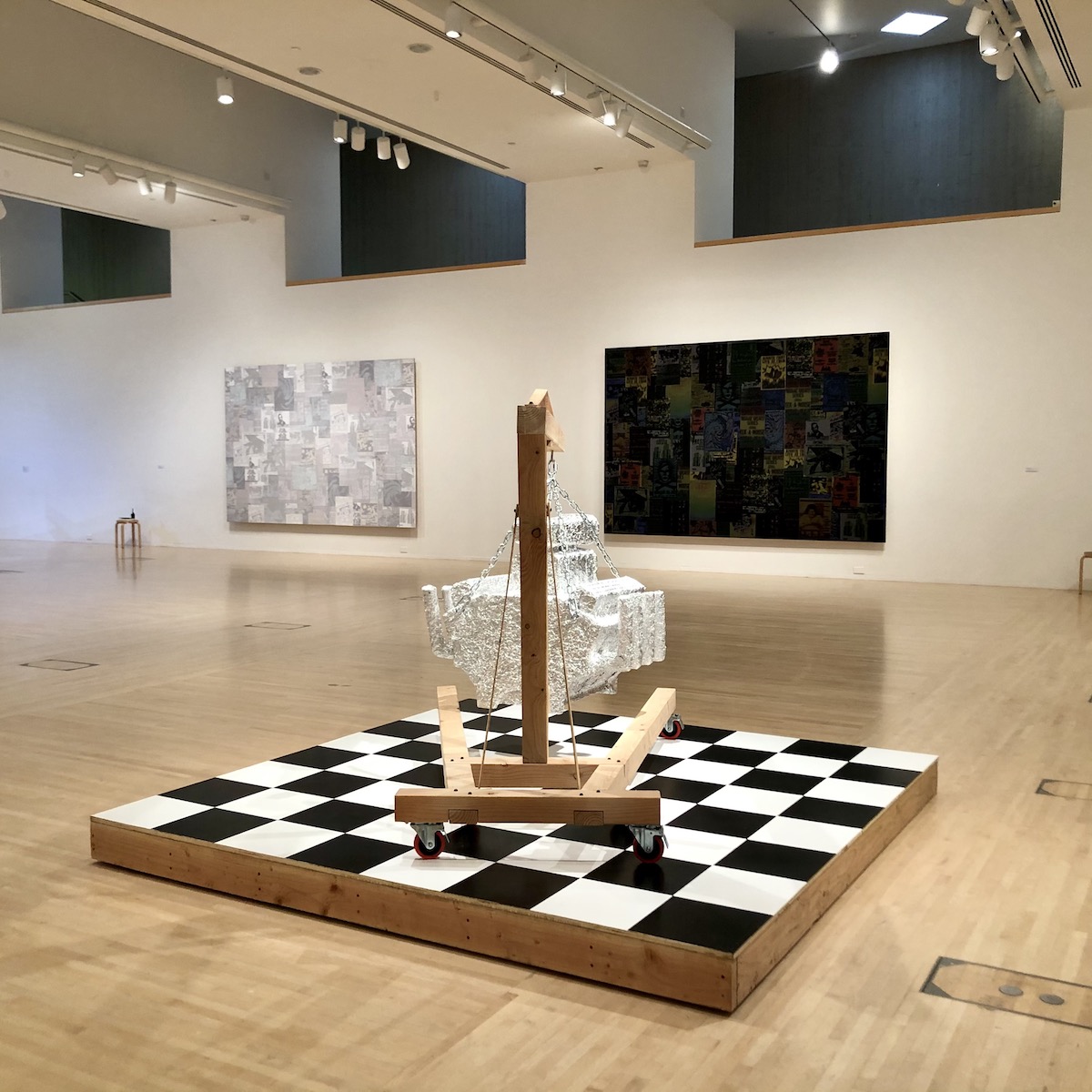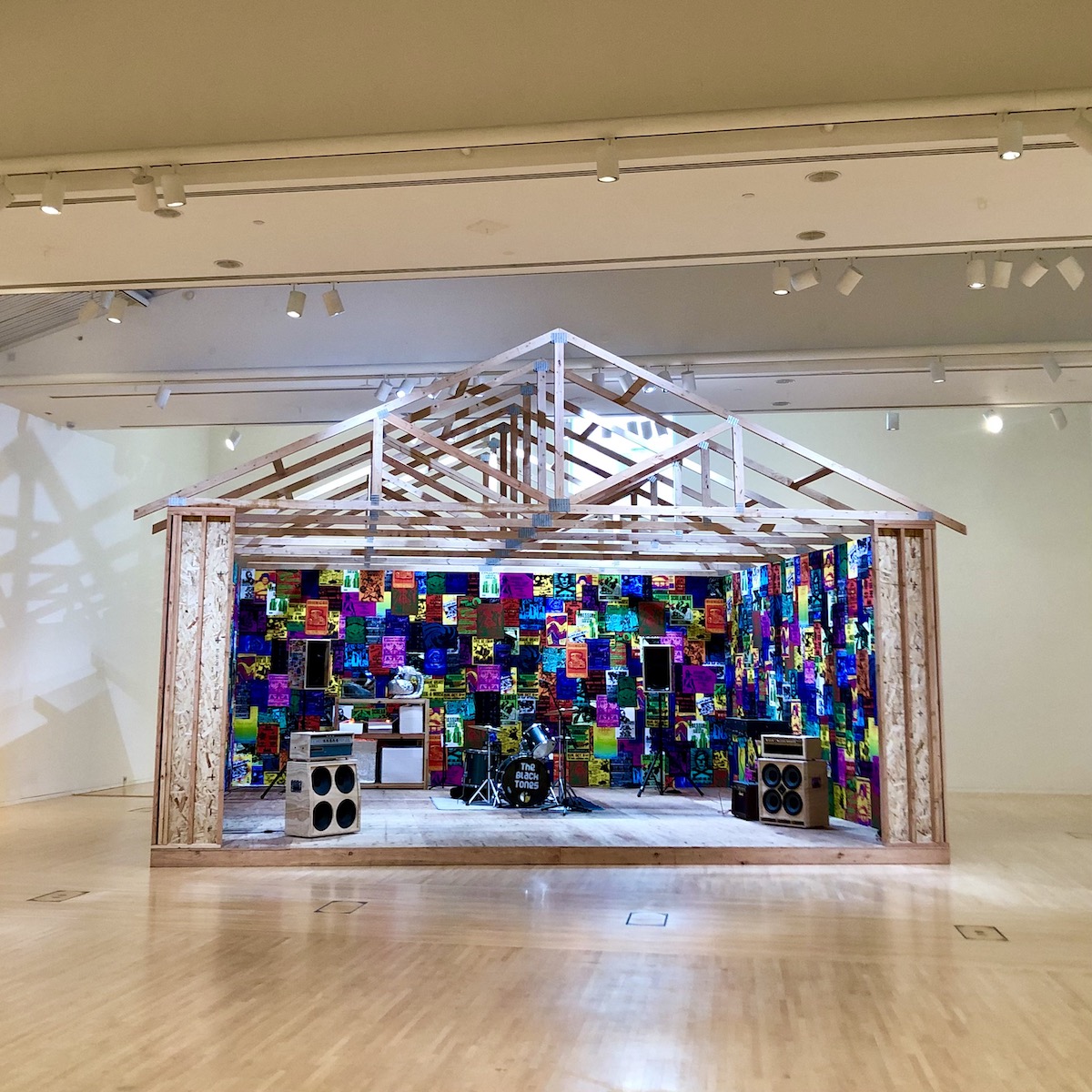The garage has a long and glorious history as a place where inspiration happens—the site of tools, tinkering, rehearsing, inventing and restoring from rock bands to classic cars to scientific discovery. In Gary Simmons’ new exhibition “The Engine Room” at the Henry Art Gallery in Seattle—the site of many music and tech garage breakthroughs—he makes reference especially to the music and motor idioms. While on the one hand his callback to the mythology of the garage genius piques a nearly nostalgic sense of Americana, at the same time and in every gesture, Simmons revises and remembers a version of that same history corrected for racial equity and representation—where it happened and where it rightly belongs, at the heart of America and its sense of itself.

Gary Simmons, B-Sides, 2021
One of his signature erased blackboard mural-scale paintings offers lesser-known Jimi Hendrix records with marvelous titles like “The Stars That Play with Laughing Sam’s Dice” and “Burning of the Midnight Lamp”—the B-Sides (2021). In these paintings, the physical and metaphysical action of erasure from history and how it is taught is embodied in the imagery and materials, yet made monumental and indelible. In this instance, it’s also a reminder that there’s a lot more to Hendrix and his cultural legacy than the greatest hits. Facing this work from the far side of the gallery is a full-scale garage, a three-sided structure that doubles as a theatrical set, complete with musicians’ equipment and set-ups—and indeed this room is activated throughout the show by musicians in residence. Garage Band (2021) and its interior is an optical carnival of collected, reimagined and collaged concert posters from around the world—a psychedelic miniature wonderland of indie rock, punk, rap and everything in between that one cannot help but experience as a nod to the city of Seattle, perhaps the most famous source of cool rock posters in history. But again, this is more than a history lesson, it’s an aesthetic embrace that sees the artist inventively correcting for inclusion in service of a more complete truth.

Gary Simmons, Big Block, 2021
In the middle of the gallery, a free-standing, reflective, foil-covered engine block hangs from a chain above a bit of parquet flooring; a mammoth leftover, devoid of context, valued for its design quirks and abstract values instead of its engaged functionality. Big Block (2021) takes pride of place as a symbol, but of what? Devoted connoisseurship, luxury hobby, the illusion of bygone “simpler” times, the soul of a man in the form of vintage arcana? It ties the room together physically and narratively, serving the pun at its heart with a bit of humor that matches with both the wild joy of the garage and the obscure poetry of the tunes.
Henry Art Gallery
April 03, 2021 — August 22, 2021


